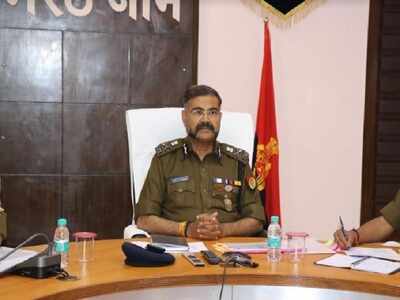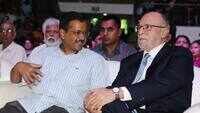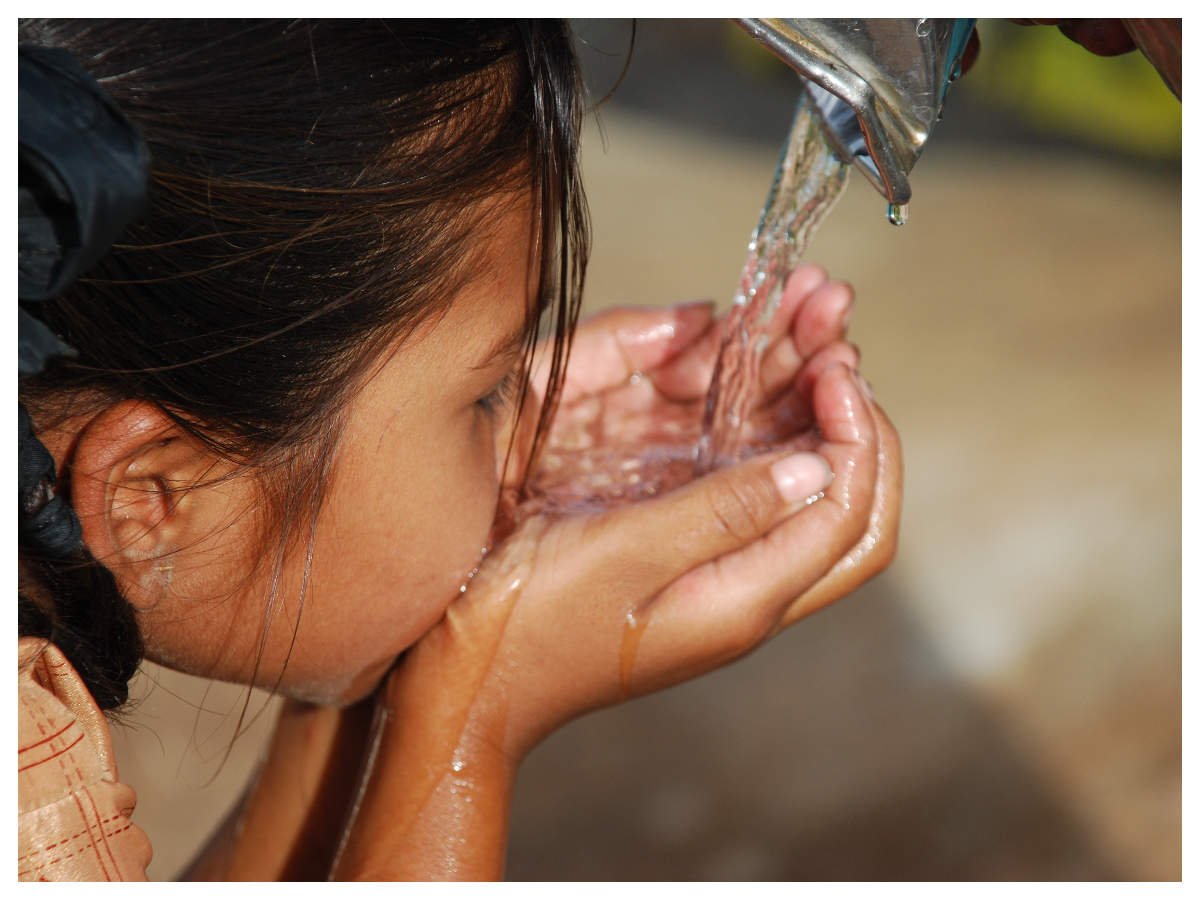
MEERUT: Amid hopes for the announcement of notification for elections to 59,076 village panchayats in Uttar Pradesh, which are due this year, there has been a spate of killings and murderous attacks in the rural belt of the state. With the term of village panchayats ending on December 15 and the state machinery needing at least six months to meet various formalities, there has been a steady rise in violent incidents in the already charged-up atmosphere in the state despite months of successive lockdowns at the time of coronavirus pandemic.
On April 9, the gram pradhan of Chandauli district's Mehroda village was shot. Then on May 18, the pradhan of Palia village near Ayodhya, Jaiprakash Singh, was shot dead. On the same day, half a dozen men armed with country-made weapons attacked the kin of a local village pradhan in Baghpat, killing one on the spot and injuring two others. A day later, in Sambhal, a sitting village pradhan’s husband and his son were gunned down in the ongoing village rivalry. The sensational murder was even caught on the camera and the video had gone viral. On May 20, two brothers were killed in a Meerut village when clashes broke out between supporters of the former and sitting pradhans.
On Saturday, a farmer was murdered when his political rivals equipped with firearms and swords attacked him in Bareilly region.
This is not new. In the 2015 panchayat polls in the state, over a dozen lives were lost in the pre- and post-poll violence while many more were injured.
UP police, however, doesn't segregate between general increase in crime and those linked with rural politics.
“Political rivalries generally arise out of land disputes and prestige. So the line dividing crime due to political rivalries and other reasons often gets blurred. Hence, we cannot have a separate data of poll-related violence when the announcement of such election is still more than six months away. But, we are keeping a close watch on the incidents and have developed a multipronged strategy to mitigate this problem,” additional director general (law and order) Prashant Kumar said.
Kumar added that the district administrations have been advised to fill up 19,500 vacancies of chowkidars and digital volunteers are being trained to ensure there is no flare-up due to the abuse of social media in poll-related rivalries in the rural parts.
Over the years, the gram panchayat polls have been turned into a crude display of money and muscle, like other elections in the country.
Officially, the UP State Election Commission has set a cap of Rs 75,000 in poll expenses for a gram pradhan candidate, apart from Rs 2,000 as security deposit and another Rs 300 for filing nomination. However, candidates backed by political parties spend a fortune to win these polls. According to one estimate, while candidates spend Rs 10 lakh on an average on their campaign, some of the wealthy ones are said to have spent in excess of Rs 50 lakh.
Registered voters, who have left the villages to work in bigger cities, are brought back to the village on the polling day in buses hired by the candidates. Sometimes each candidate has to hire dozens of buses to ferry the voters.
The panchayat polls are also important for the national parties because of the pradhan’s grip on these voters and his deemed ability to swing votes in favour of candidates in the assembly and general elections. According to a London School of Economics field study in UP’s Unnao district just before the 2012 assembly polls, the majority of voters in the rural parts did not even know the names of their MLA or MP. However, almost all of them knew their pradhans personally and trusted his opinion even in their personal matters.
On April 9, the gram pradhan of Chandauli district's Mehroda village was shot. Then on May 18, the pradhan of Palia village near Ayodhya, Jaiprakash Singh, was shot dead. On the same day, half a dozen men armed with country-made weapons attacked the kin of a local village pradhan in Baghpat, killing one on the spot and injuring two others. A day later, in Sambhal, a sitting village pradhan’s husband and his son were gunned down in the ongoing village rivalry. The sensational murder was even caught on the camera and the video had gone viral. On May 20, two brothers were killed in a Meerut village when clashes broke out between supporters of the former and sitting pradhans.
On Saturday, a farmer was murdered when his political rivals equipped with firearms and swords attacked him in Bareilly region.
This is not new. In the 2015 panchayat polls in the state, over a dozen lives were lost in the pre- and post-poll violence while many more were injured.
UP police, however, doesn't segregate between general increase in crime and those linked with rural politics.
“Political rivalries generally arise out of land disputes and prestige. So the line dividing crime due to political rivalries and other reasons often gets blurred. Hence, we cannot have a separate data of poll-related violence when the announcement of such election is still more than six months away. But, we are keeping a close watch on the incidents and have developed a multipronged strategy to mitigate this problem,” additional director general (law and order) Prashant Kumar said.
Kumar added that the district administrations have been advised to fill up 19,500 vacancies of chowkidars and digital volunteers are being trained to ensure there is no flare-up due to the abuse of social media in poll-related rivalries in the rural parts.
Over the years, the gram panchayat polls have been turned into a crude display of money and muscle, like other elections in the country.
Officially, the UP State Election Commission has set a cap of Rs 75,000 in poll expenses for a gram pradhan candidate, apart from Rs 2,000 as security deposit and another Rs 300 for filing nomination. However, candidates backed by political parties spend a fortune to win these polls. According to one estimate, while candidates spend Rs 10 lakh on an average on their campaign, some of the wealthy ones are said to have spent in excess of Rs 50 lakh.
Registered voters, who have left the villages to work in bigger cities, are brought back to the village on the polling day in buses hired by the candidates. Sometimes each candidate has to hire dozens of buses to ferry the voters.
The panchayat polls are also important for the national parties because of the pradhan’s grip on these voters and his deemed ability to swing votes in favour of candidates in the assembly and general elections. According to a London School of Economics field study in UP’s Unnao district just before the 2012 assembly polls, the majority of voters in the rural parts did not even know the names of their MLA or MP. However, almost all of them knew their pradhans personally and trusted his opinion even in their personal matters.

Coronavirus outbreak
Trending Topics
LATEST VIDEOS
City
 Delhi-NCR: Shocking visuals of hit and run case caught on CCTV in Ghaziabad
Delhi-NCR: Shocking visuals of hit and run case caught on CCTV in Ghaziabad  Covid-19: Delhi LG Anil Baijal overrules Arvind Kejriwal's decision, orders Delhi govt hospitals to treat all patients
Covid-19: Delhi LG Anil Baijal overrules Arvind Kejriwal's decision, orders Delhi govt hospitals to treat all patients  Shocker from Tamil Nadu: Patient murdered brutally by unidentified men in Madurai hospital
Shocker from Tamil Nadu: Patient murdered brutally by unidentified men in Madurai hospital  Personal data of 2.91 crore job seekers leaked on dark web, reveals Maharashtra Cyber Department
Personal data of 2.91 crore job seekers leaked on dark web, reveals Maharashtra Cyber Department
More from TOI
Navbharat Times
Featured Today in Travel
Quick Links
Kerala Coronavirus Helpline NumberHaryana Coronavirus Helpline NumberUP Coronavirus Helpline NumberBareilly NewsBhopal NewsCoronavirus in DelhiCoronavirus in HyderabadCoronavirus in IndiaCoronavirus symptomsCoronavirusRajasthan Coronavirus Helpline NumberAditya ThackerayShiv SenaFire in MumbaiAP Coronavirus Helpline NumberArvind KejriwalJammu Kashmir Coronavirus Helpline NumberSrinagar encounter
Get the app



